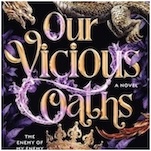Jane Austen, One Day and What Makes a Love Story Epic

Towards the end of Jane Austen’s Mansfield Park (which at the time of publication was her best-selling book,) the story’s decades-spanning love between Edmund and Fanny concludes with a peculiar aside. She starts with a direct address to the reader, wry in its self-awareness: “I only entreat everybody to believe that exactly at the time when it was quite natural that it should be so, and not a week earlier, Edmund did cease to care about Miss Crawford, and became anxious to marry Fanny, as Fanny herself could desire.”
Such an epic, winding story to conclude in this brief report is unexpected—a strangely unsentimental approach for a romantic drama. But this is not proof of a rushed conclusion (or not just proof of a rushed conclusion) it is indicative of Austen’s intimate understanding of relational rhythms. The eventual confirmation of the characters’ love is a barely acknowledged event, less important than the moments leading up to it, making them inevitable. It is an idea shared by David Nicholls in his best-selling One Day, newly and faithfully adapted as a Netflix miniseries.
Following the story of Dexter and Emma, two friends whose (almost-) hook up on the last day of university unfolds into a lifelong friendship, One Day lives in the space between the two’s magnetic draw, floating on their dramatic ebb and flow. Yet the first, stumbling steps to their eventual relationship take place in the space between chapters, implied in the text but never explicitly set in writing. The reader is left to frame that event, assembling it through the scraps and fragments Dex and Em relay in conversation. Like Austen did almost 200 years before, Nicholls entreats “everybody to believe” that their reunion plays out as it should, when it should, away from prying eyes.
Every version of the epic love story is burdened by a serious reputation, but really the depth and clarity of Austen’s most famous romances are born from her funny observations of the world. Nineteenth-century England, with its limited transport options, forces people to have a deeper relationship with their space, and as such Austen’s characters move around and across immovable landmarks. Her work is locked into a narrow corner of England, action circling the suburbs of Bath with each dinner table conversation, leveled by the totality of English cynicism. True intention can only be expressed in the journey through place to find one another, the rugged country paths from house to house conceal chapters of her most famous couple’s early, undeclared love. As Austen explained in Sense and Sensibility, “The high downs which invited them from almost every window of the cottage to seek the exquisite enjoyment of air on their summits…” It is this profound sense of potential that stretches the tale’s scope beyond its limited geographical shape, imagining a terrain bathed in promise.
-

-

-

-

-

-

-

-

-

-

-

-

-

-

-

-

-

-

-

-

-

-

-

-

-

-

-

-

-

-

-

-

-

-

-

-

-

-

-

-








































